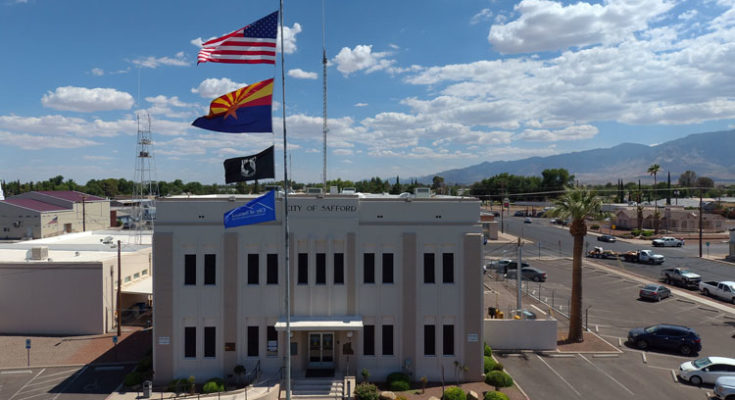By Jon Johnson
SAFFORD – During its Monday night meeting, the Safford City Council unanimously voted to approve utility rate changes, including increases, and solar credit changes.
Three citizens spoke out against the utility and solar changes, including former council member Ed Zappia, former Graham County Superior Court Clerk Cindy Woodman, and CMI owner Ron Tolman.
After a roughly half-hour executive session meeting, the council reemerged and, after a brief discussion, approved the resolution. Council member Brad Hemphill made the motion to approve the resolution on utility rate changes, which was seconded by Council member Alma Flores and passed unanimously.
The first new rates will be effective Dec. 1, according to Safford City County Finance Director Troy Bingham. While the proposed rates are set for the first year, the council must approve future projected increases each year.
The changes stem from a comprehensive five-year Utility and Service Rate Study, previously presented to the Safford City Council by Bingham. The study recommends rate increases for water, wastewater, sanitation, and natural gas services to ensure long-term financial sustainability, while proposing a notable reduction in electricity rates. In a unanimous vote during a previous meeting, the council expressed its “Intent to Increase Rates” for the affected utilities, paving the way for these adjustments.
Key rate adjustments over five years
Under the study’s recommendations, most utility services would see gradual hikes, with natural gas facing the most substantial increases:
- Natural Gas (Residential): The monthly service availability charge is expected to rise from $15 to $27.43 by 2029. Delivery charges per MCF (thousand cubic feet) would increase from $5.10 to $9.33.
- Natural Gas (Commercial): Similar percentage increases apply, scaled to business usage levels.
- Water, Wastewater, and Sanitation: Incremental increases are proposed; complete breakdowns are available in the study.
- Electricity: In a welcome contrast, rates are set to decrease from just over 7 cents per kWh to under 5 cents per kWh by 2029, reflecting efficiencies in the city’s power operations.
These phased changes aim to balance operational costs with affordability for residents and businesses over the next five years.
Updates to the solar credit program
A highlight of recent council discussion was the overhaul of Safford’s solar incentive program, which shifted to a hybridized net metering model. Previously, the city offered net metering credits on a one-to-one basis each month for excess solar generation. The proposed system maintains this during the billing month but introduces a 25% credit for any true excess power at month’s end, calculated on the 20th of each month.
Key details include:
- Full Credits During the Month: Solar producers will continue to receive a full kWh credit for every kWh exported to the grid, addressing the common issue of daytime overproduction and nighttime draw from the grid.
- Excess Handling: Only net excess after monthly balancing qualifies for the reduced 25% credit rate.
- New Administrative Fee: A $6 monthly fee will support program administration.
- Transition for Existing Users: The city plans to purchase accumulated credits from current solar customers before implementing the new model, thereby minimizing disruptions.
This approach differs from the Arizona Corporation Commission’s (ACC) real-time export crediting, which values excess at about 25% of retail rates and ended full net metering in 2016 (with grandfathering for existing systems). For most Safford solar users, the change is expected to have a negligible impact; however, those with systems designed to bank seasonal credits (e.g., building up in cooler months for summer peaks) may experience adjustments.
This solar model preserves strong incentives for renewable energy adoption while aligning with broader utility reforms.








